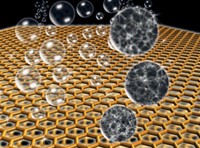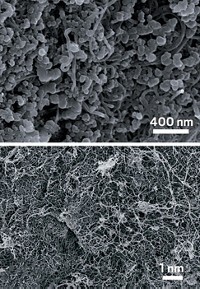Advertisement
Grab your lab coat. Let's get started
Welcome!
Welcome!
Create an account below to get 6 C&EN articles per month, receive newsletters and more - all free.
It seems this is your first time logging in online. Please enter the following information to continue.
As an ACS member you automatically get access to this site. All we need is few more details to create your reading experience.
Not you? Sign in with a different account.
Not you? Sign in with a different account.
ERROR 1
ERROR 1
ERROR 2
ERROR 2
ERROR 2
ERROR 2
ERROR 2
Password and Confirm password must match.
If you have an ACS member number, please enter it here so we can link this account to your membership. (optional)
ERROR 2
ACS values your privacy. By submitting your information, you are gaining access to C&EN and subscribing to our weekly newsletter. We use the information you provide to make your reading experience better, and we will never sell your data to third party members.
Materials
Big Charge For Nanobatteries
Fabrication method offers precise control of nanopore geometry in templated arrays used to make miniature energy-storage devices
by Celia Henry Arnaud
November 17, 2014
| A version of this story appeared in
Volume 92, Issue 46
Gary W. Rubloff, Sang Bok Lee, and coworkers at the University of Maryland have devised a precisely controlled fabrication method to make a battery that actually consists of billions of nanobatteries connected in parallel (Nat. Nanotechnol. 2014, DOI: 10.1038/nnano.2014.247). Each individual nanobattery is made inside a nanopore of a ceramic template by atomic layer deposition of ruthenium charge collectors topped with vanadium oxide storage material. Pristine V2O5 at one end serves as the cathode, and lithiated V2O5 at the other end serves as the anode. The battery array achieves the predicted capacity for the V2O5 storage material and power levels that are 10-fold higher than previously reported nanostructured batteries, the researchers say. More than 80% of the initial capacity is retained after 1,000 charge-discharge cycles. The controlled geometry allows investigation of ion transport between electrodes less than 100 nm apart, comments Christopher P. Rhodes, a nanomaterials expert at Texas State University. “This is an important and largely unexplored area of research,” Rhodes says.





Join the conversation
Contact the reporter
Submit a Letter to the Editor for publication
Engage with us on Twitter